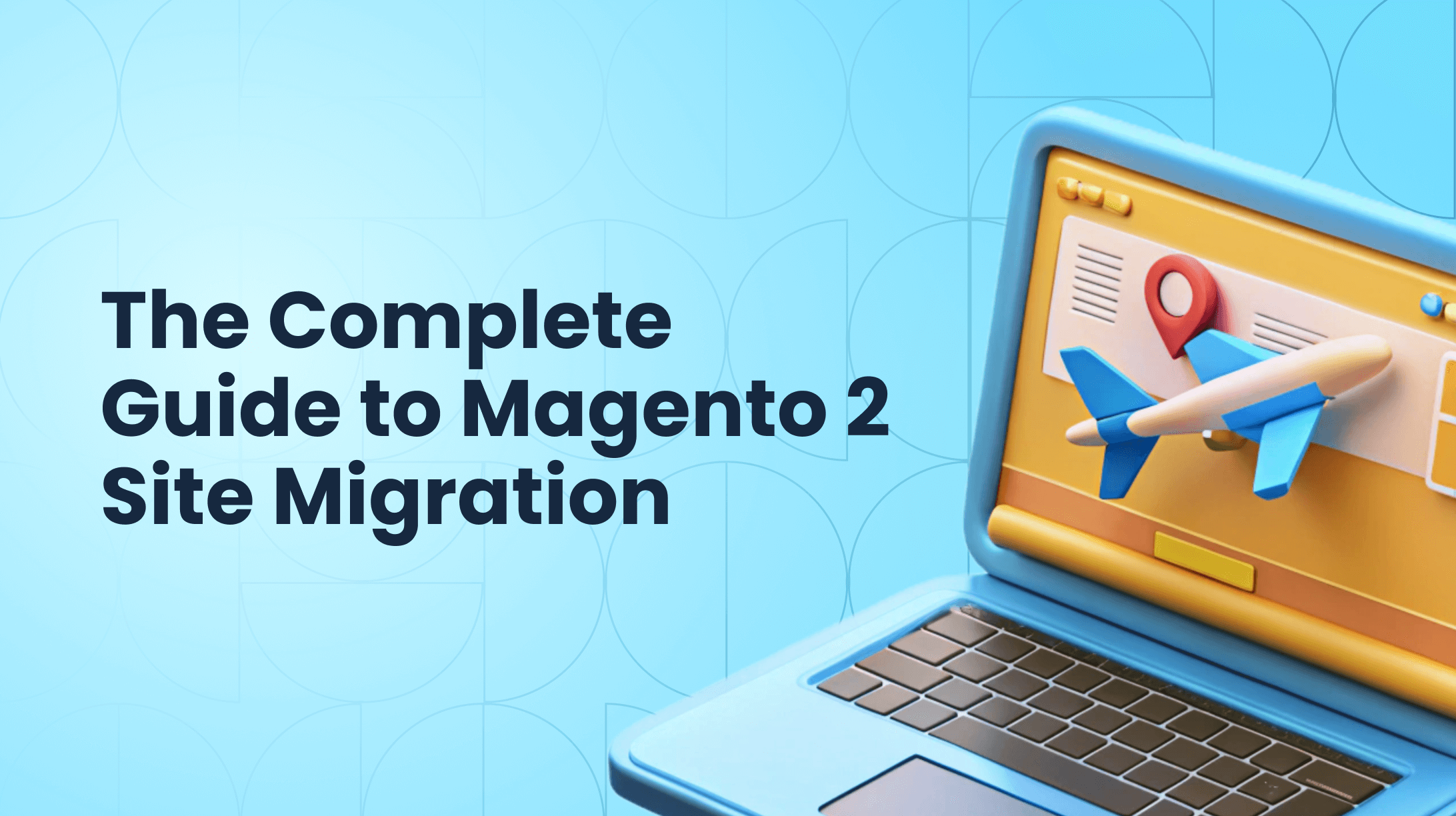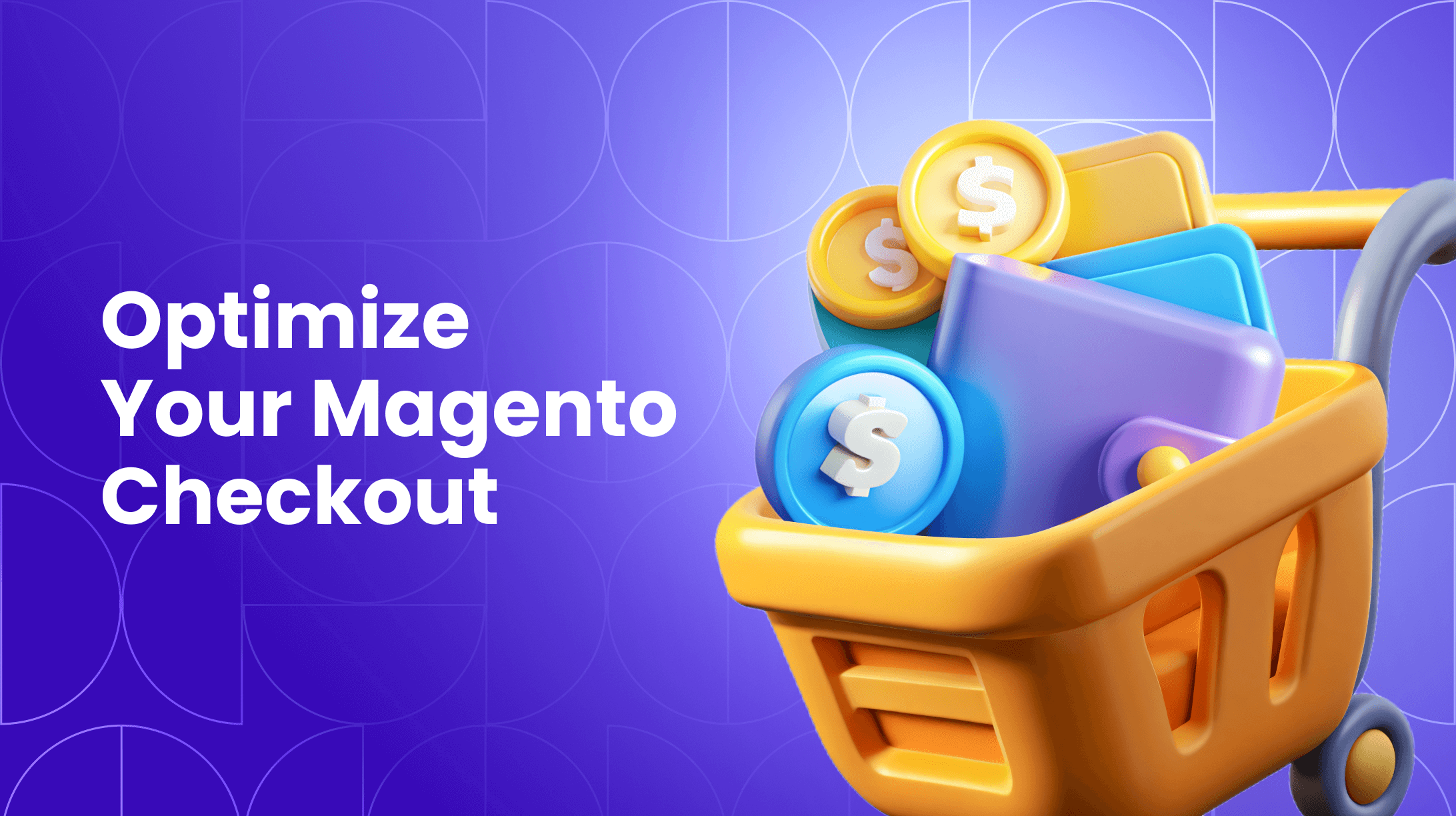0%

In This Article:
Why Migrate from Magento 1 to Magento 2?
Pre-Migration Planning
Backup Your Magento 1 Store
Preparing Your Magento 2 Environment
Data Migration Process
Theme and Customization Migration
Extension and Custom Code Migration
Testing and Quality Assurance
Post-Migration Optimization
Real-World Examples of Magento 1 to Magento 2 Migration
FAQ
The latest iteration of the Magento e-commerce platform – Magento 2 – is a significant upgrade over its predecessor. Magento 2 offers a streamlined user experience, enhanced security protocols, and a more powerful, scalable infrastructure, making it an essential upgrade for online retailers aiming to stay competitive.
However, the transition to this platform version can be complex and requires careful planning and execution. In this article, we’ll navigate you through the intricacies of Magento migration, providing a thorough step-by-step guide that ensures a smooth and efficient upgrade to Magento 2.
Why Migrate from Magento 1 to Magento 2?
Migrating from Magento 1 to Magento 2 offers numerous advantages that align with modern business needs:
- Security – Magento 1 no longer receives official support or security updates.
- Performance – Magento 2 offers faster page load times and enhanced caching.
- User Interface – Features a modernized, user-friendly admin interface.
- SEO Capabilities – Improved tools for better search engine optimization.
- Scalability – Supports advanced features and scalability for growth.
- Mobile Responsiveness – Built-in designs improve user experience on all devices.
- Future-Proofing – Ensures your store remains competitive with ongoing updates.
Step 1: Pre-Migration Planning
First and foremost, your Magento 1 to 2 migration process should involve a comprehensive review of your current site's components: products, customers, and orders. It is essential to mitigate risks of data loss and functionality issues post-migration. Auditing customizations and third-party extensions is also crucial to ensure compatibility and functionality within the Magento 2 framework.
Here’s an additional list of considerations for your audit:
- List and prioritize the data, features, and extensions you want to migrate.
- Check whether your third-party extensions have compatible versions available.
- Create a prioritization matrix and plan for potential custom code rewrites.
Choosing the right time for migration is another critical step. Analyze your website's traffic patterns to schedule the migration during a period that minimally impacts your business operations.
Finally, set up a staging environment and migrate a limited scope of data to verify Magento 2 without the full commitment of a complete migration. To test your Magento 2, migrate only customers and orders from your current environment to the testing one. This way, you’ll be able to perform troubleshooting and optimization without disrupting the live store.
Step 2: Backup Your Magento 1 Store
Before initiating the migration from Magento 1, see that components of your existing store are thoroughly backed up. We suggest following these steps:
- Data Backup. Utilize the Magento Admin Panel or a preferred server backup tool to export a snapshot of your database. This includes products, customers, and order data. Confirm the integrity of the backup by checking that no errors occurred during the process.
- Code and Media Backup. Manually copy all custom code, including personalized themes and extensions, via FTP or file manager. Use a media storage tool to safeguard multimedia files and ensure that no data is overlooked during the transfer.
Step 3: Preparing Your Magento 2 Environment
To successfully install Magento 2, ensure server compatibility first. Check if your system meets the platform's prerequisites, including supported PHP versions, necessary extensions, and appropriate database solutions. Then, proceed with the Magento 2 installation.
- Download the Magento 2 installation package.
- Upload the package to your hosting server.
- Create a database for Magento 2.
- Run the installation script by launching the Setup Wizard in your web browser.
- Follow the wizard to configure the environment and complete the installation.
Remember to adhere to Magento's official guidelines for the most up-to-date procedures and security practices.
Step 4: Data Migration Process
The Magento 2 data migration process involves several precise steps to ensure a seamless transition from your older Magento platform.
- First, take advantage of the Magento Data Migration Tool. It is instrumental in configuring the settings to align with the new platform and mapping the existing data sets to their corresponding entities in Magento 2.
- Move on to migrating the website settings and elements. Transfer all store configurations, store views, and website code while ensuring that the fundamental structure of the online store remains intact.
- Next, transfer the data entities through a sequential transfer of all products, customer information, orders, and other vital data. Maintain data integrity and coherence during this phase to prevent any loss of information.
- Finally, migrate the data that has changed or been updated since the initial migration. With this, you’ll ensure that any new information is synchronized and up-to-date.
Step 5: Theme and Customization Migration
Your store’s frontend migration begins with the selection (or development) of a Magento 2-compatible theme. In other words, you either adapt your existing theme to be compatible with Magento 2's updated architecture or choose a new theme that resonates with your brand identity and meets the technical requirements of the Magento 2 platform. Confirm that the chosen theme is responsive, SEO-friendly, and provides a seamless user experience across all devices.
Back-end customizations should also be adapted to align with the new platform. Review or rewrite each piece of custom code – which may include personalized functionalities or integrations unique to your business workflows – to ensure it smoothly operates within the new environment.
Step 6: Extension and Custom Code Migration
If you followed our guide and invested enough time and resources in the pre-migration planning step, you’ve already determined which extensions are crucial for your Magento 2 setup. That decision matrix should help you identify the extensions to retain, replace, or render obsolete due to Magento 2’s enhanced functionality.
For the vital extensions with no direct Magento 2 counterpart, you may need to search for alternative solutions that can deliver similar functionalities or consider developing custom modules.
The next critical step is migrating custom code. Unlike standard extensions, custom code crafted for Magento 1 will not seamlessly transfer to Magento 2 due to the architectural differences. To successfully migrate your existing functionality, you need to:
- Ensure compatibility of code with the new platform's structure and requirements.
- Refactor the code to align with Magento 2’s coding standards and practices.
- Test the custom modules rigorously in a staging environment before going live.
Step 7: Testing and Quality Assurance
To validate that all customizations are integrated and functioning as intended, you should incorporate thorough testing within your Magento 2 code migration process. This way, you can validate that all pieces of custom code transitioned smoothly and maintain the site's performance.
Your approach to full-scale migration testing and QA should be comprehensive and structured. Aim to confirm that your migrated store is technically sound and ready to deliver a secure and optimized shopping experience.
- Functional Testing is the first step. Each feature of the Magento 2 store needs to be verified to function as expected. This phase checks the compatibility of products, customer interfaces, checkout processes, and payment gateways to prevent any disruptions in user experience.
- Performance Testing follows. This QA step examines the site's responsiveness and load times, uncovering potential bottlenecks that affect user satisfaction and search engine rankings. It may involve stress testing the site under various loads and implementing enhancements to optimize speed and resource management.
- Security Testing forms the final stage of quality assurance, focusing on protecting customer data and preventing unauthorized access. This testing assesses the robustness of the Magento 2 site against common vulnerabilities and verifies that all customer transactions are secure.
Rigorous testing is key to ensuring functional integrity, optimal performance, and robust security post-migration. Dedicate enough time to validate every facet of your new site, from user experience to back-end processes.
Post-Migration Optimization
Now that your Magento 2 store is live, it's important to focus on optimizing its performance and visibility. This will help you maximize its potential and deliver an exceptional shopping experience to your customers.
Enhance Site Speed
To ensure fast loading times, consider integrating caching solutions like Varnish and optimizing images for the web. Leveraging a Content Delivery Network (CDN) can further improve speed by distributing content globally. Additionally, keep extensions and themes updated to maintain peak performance and compatibility.
Improve Customer Experience
A smooth and intuitive interface is key, optimize navigation with clear menus and an efficient search function. Adopt responsive design to ensure accessibility across devices, and explore Magento 2’s personalization tools, such as AI-driven recommendations or chatbots, to enhance user engagement.
Boost SEO
Maximize your store’s visibility by refining meta tags, headings, and URL structures. Take advantage of Magento 2’s built-in SEO tools, including schema markup, XML sitemaps, and canonical tags. Regularly monitor analytics to track performance and identify areas for improvement.
Strengthen Security
Protect customer data by implementing SSL certificates and enabling two-factor authentication for admin access. Stay proactive by applying the latest security patches and conducting routine audits. Measures like firewalls and IP whitelisting can further safeguard your store from potential threats.
Streamline Checkout Process
Simplify the checkout experience by minimizing steps, supporting multiple payment methods, and allowing guest checkouts. A frictionless process reduces cart abandonment and helps drive higher conversion rates for your store.
Real-World Examples of Magento 1 to Magento 2 Migration
Businesses that migrated from Magento 1 to Magento 2 report better performance, security, and sales. These real cases prove the benefits of upgrading.
Land Rover
Land Rover wanted to strengthen their online presence and improve user experience. The migration to Magento 2 delivered a responsive, robust platform that handles high traffic volumes efficiently. This upgrade enabled easier site maintenance and smoother integrations, which boosted both site performance and customer engagement.

Helly Hansen
Helly Hansen, an outdoor clothing brand, migrated to Magento 2 to support their global expansion efforts. The transition provided multilingual capabilities and improved load times, leading to better user experiences across different regions. This migration resulted in increased sales and customer satisfaction internationally.

Sigma Beauty
Sigma Beauty upgraded to Magento 2 to streamline their e-commerce operations and improve site speed. The migration enabled more advanced analytics and enhanced customization options, which resultingz in a smoother checkout process and a 20% increase in conversion rates. This allowed them to offer a more optimized shopping experience to their customers.

Final Thoughts
The upgrade to Magento 2 promises enhanced performance, a more intuitive admin interface, improved scalability, and multiple other benefits for your e-commerce operations. And while the migration process itself can feel daunting and challenging, the success in Magento 2 migration depends on just 2 major components: meticulous planning and diligent execution. A careful, patient, and professional approach to migration will pay dividends in the shape of a seamless transition to a superior e-commerce platform.
FAQ
Why migrate from Magento 1 to Magento 2?
Migrating to Magento 2 is important for improved performance, enhanced security features, and modern capabilities. With Magento 1 no longer receiving updates or support, staying on an outdated platform can compromise store security and efficiency.
How to migrate from Magento 1 to Magento 2?
Begin by assessing your current setup for compatibility. Install Magento 2 on a separate server, use the Data Migration Tool for transferring data, update themes and extensions, and perform thorough testing before switching your store over.
What is Magento migration?
Magento migration involves transferring an eCommerce store from an older version, like Magento 1, to a newer version, such as Magento 2. This process includes moving data, themes, and extensions while improving functionality and security.
What is the difference between Magento 1 and 2?
Magento 2 differs from Magento 1 by offering faster performance, a more intuitive admin interface, improved security features, modern architecture, and better mobile optimization, making it a more robust and scalable platform.
Alex excels in creating and approving customization architecture, ensuring robust and efficient solutions for e-commerce platforms. His expertise in Magento allows him to effectively manage tech resources and drive technical projects to successful completion.
Alex excels in creating and approving customization architecture, ensuring robust and efficient solutions for e-commerce platforms. His expertise in Magento allows him to effectively manage tech resources and drive technical projects to successful completion.


